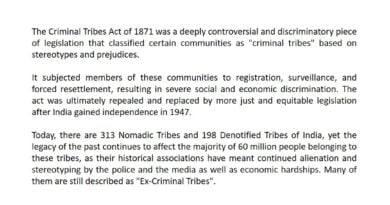STARS project: Strengthening Teaching Learning and Results for States
Context:
Performance of World Bank aided project STARS was reviewed recently.
Contents
What is the STARS Project ?
The STARS Project stands for Strengthening Teaching Learning and Results for States. The programme aims at improving the assessment system in schools and ensuring equal education for all .
Given below are important facts related to the STARS Project:
- The total cost of the project is Rs. 5,718 and a partial financial support will also be provided by the World Bank for an amount of US$ 500 million
- The project was approved by the Union Government on June 24, 2020
- It comes under the Department of School Education and Literacy, Ministry of Education (MoE)
- The programme aims at working on similar objectives as followed by the National Education Policy (NEP) 2020
- There are six Indian states which will be covered under the STARS Project:
- Himachal Pradesh
- Rajasthan
- Maharashtra
- Madhya Pradesh
- Kerala
- Odisha
- This project will be implemented through the Samagra Shiksha Scheme
- The autonomous body, PARAKH (Performance Assessment, Review, and Analysis of Knowledge for Holistic Development) has also been established, especially for the education system under the Department of School Education and Literacy, Ministry of Education (MoE)
- As a part of the Atmanirbhar Bharat Abhiyan, the focus will be on initiatives of PM e-Vidya, Foundational Literacy, and Numeracy Mission and National Curricular and Pedagogical Framework for Early Childhood Care and Education.
- A project similar to STARS has also been introduced which will be funded by the Asian Development Bank (ADB) and work for education reforms in five Indian states, namely, Gujarat, Assam, Tamil Nadu, Jharkhand and Uttarakhand
- India’s participation in the cycle of PISA or Programme for International Student Assessment survey will also be funded by this project
Reform initiatives under the project include:
- Focusing more directly on the delivery of education services at the state, district and sub district levelsby providing customized local-level solutions towards school improvement.
- Addressing demands from stakeholders, especially parents, for greater accountability and inclusion by producing better data to assess the quality of learning; giving special attention to students from vulnerable section.
- Equipping teachers to manage this transformation by recognizing that teachers are central to achieving better learning outcomes.
- Investing more in developing India’s human capital needs by strengthening foundational learning for children in classes 1 to 3 and preparing them with the cognitive, socio-behavioural and language skills to meet future labour market needs.
Unique components of the STARS project:
Contingency Emergency Response Component (CERC):
The project includes a Contingency Emergency Response Component (CERC) under the National Component which would enable it to be more responsive to any natural, man-made and health disasters.
- It will help the government respond to situations leading to loss of learning such as school closures/infrastructure damage, inadequate facilities and use technology for facilitating remote learning etc.
- The CERC component would facilitate the rapid re-categorization of financing and the utilization of streamlined financing request procedures.
Advantages of the STARS Project
The STARS Project will benefit students in the age group of 6-17 years and act as an advantage for around 250 million students, 1.5 million schools and approximately 10 million teachers.
Other advantages of the STARS program include:
- With a specific body handling the educational system of a few states, maintaining a balance between proper education and facilities to schools will become convenient
- They will not just improve the percentage of learning candidates but will also focus on improving the standard of learning
- Proper training will also be provided to the teachers and faculty to ensure that modern forms of learning are being adopted by the students as well as the teachers
- STARS will address demands from stakeholders and parents, for providing better quality education
- This program will focus on enhancing India’s human capital demand. Providing quality education will upgrade the standard of learning and ultimately produce a better youth for the future
- The project will also target the Sustainable Development Goals (SDG)
Challenges with the STARS Project
The biggest challenge in front of the organisation members and Government is the timely appointment of teachers and filling in the vacancies to ensure that motivating and capable faculty is appointed.
Proper sessions will have to be conducted once the faculty is appointed and a proper study plan and strategy will have to be developed. Teachers will also have to be updated with the latest technologies and their usage to avoid any kind of interruption. Extreme involvement of technology will have to be avoided until a proper plan has been attained.
Another issue that may come is the distribution of funds. The World Bank has ignored the decentralization of decision making by ignoring the devolution of funds.
The concerned authorities may have to keep many points in consideration for a successful implementation of this project and to ensure that the programme meets its desired outcome
PARAKH:
A major component of the project is the establishment of PARAKH (Performance Assessment, Review, and Analysis of Knowledge for Holistic Development) as a National Assessment Centre.
- Included in the National Education Policy 2020, this autonomous institution under the Union Education Ministry will set norms for student assessment and evaluation for all school boards across the country, most of which currently follow norms set by State governments.
- It will also guide standardised testing to monitor learning outcomes at the State and national levels, according to the NEP
Source: World Bank
Also read
Discover more from Simplified UPSC
Subscribe to get the latest posts sent to your email.


